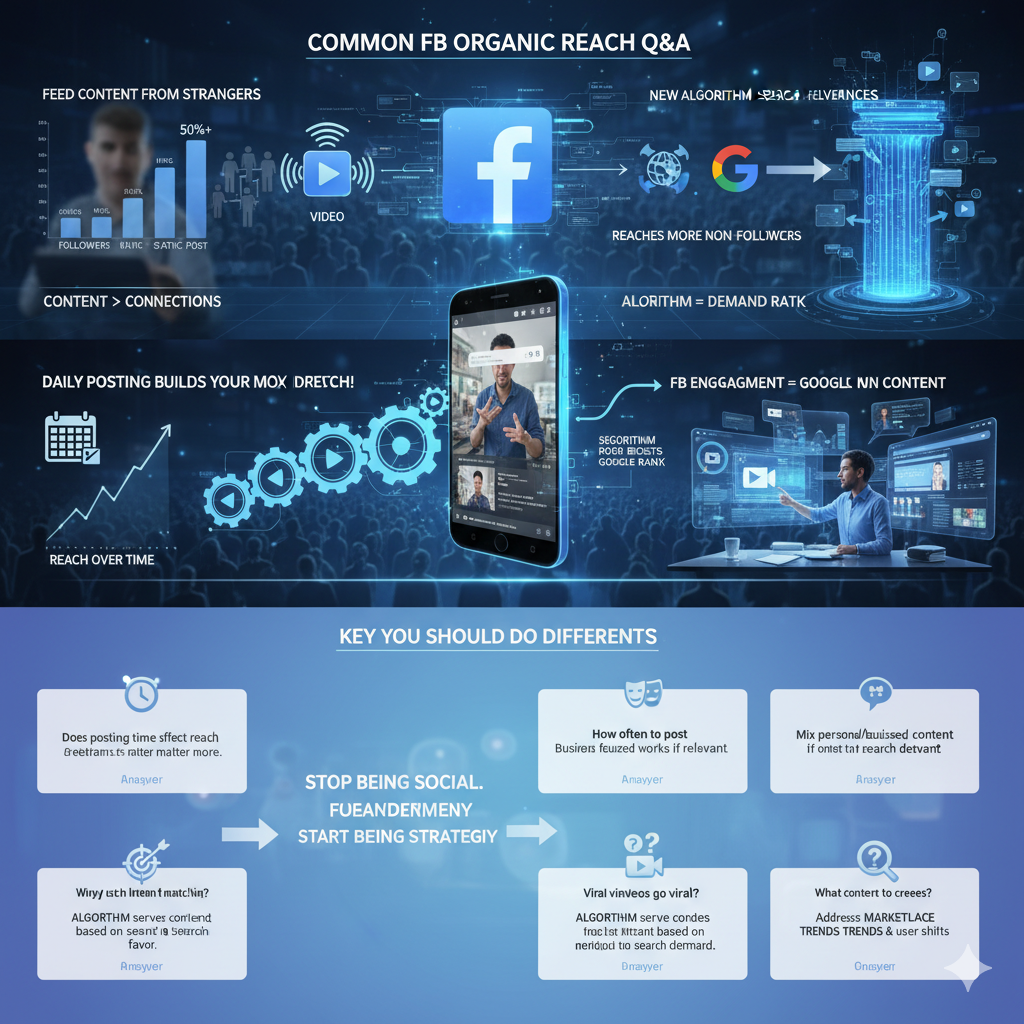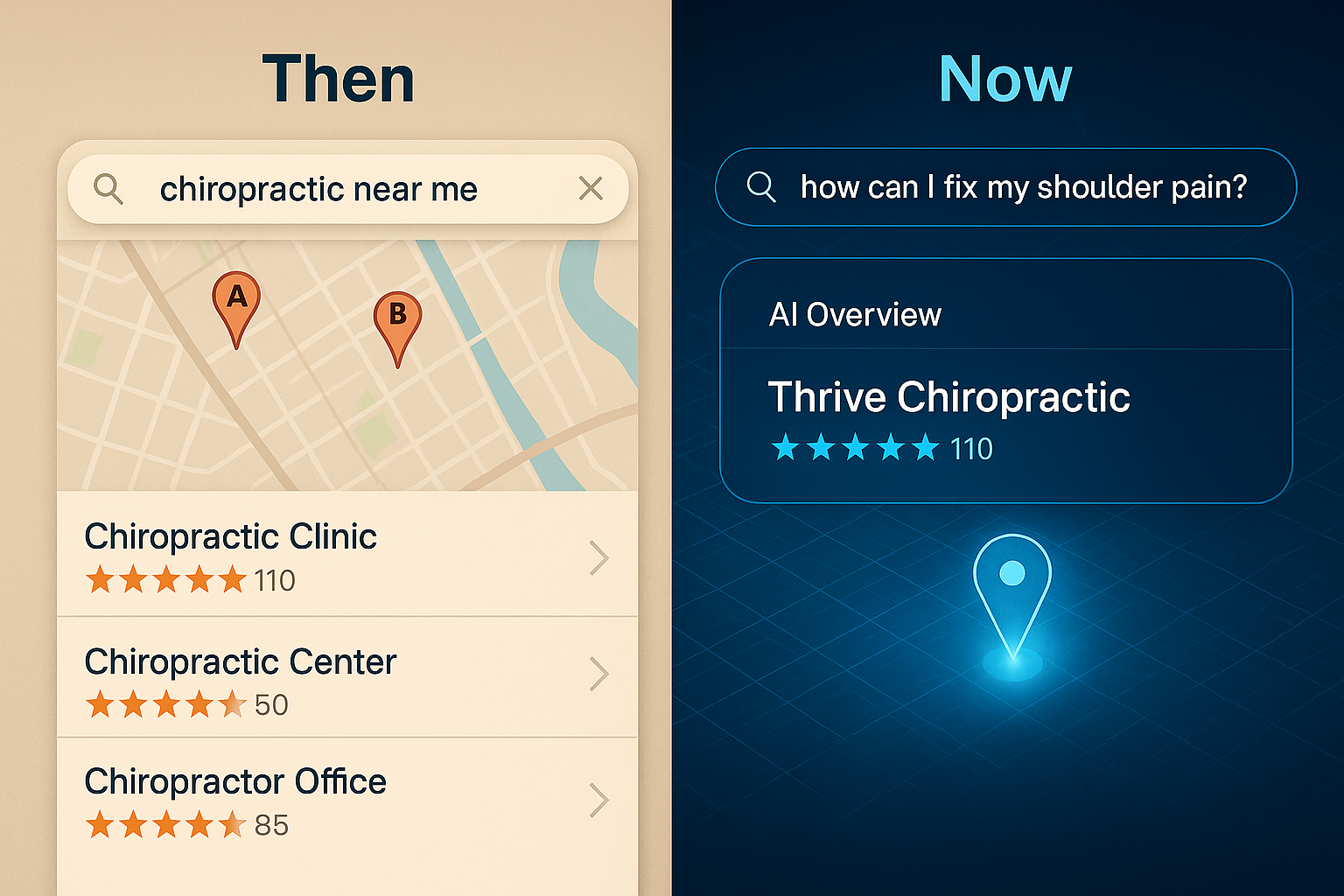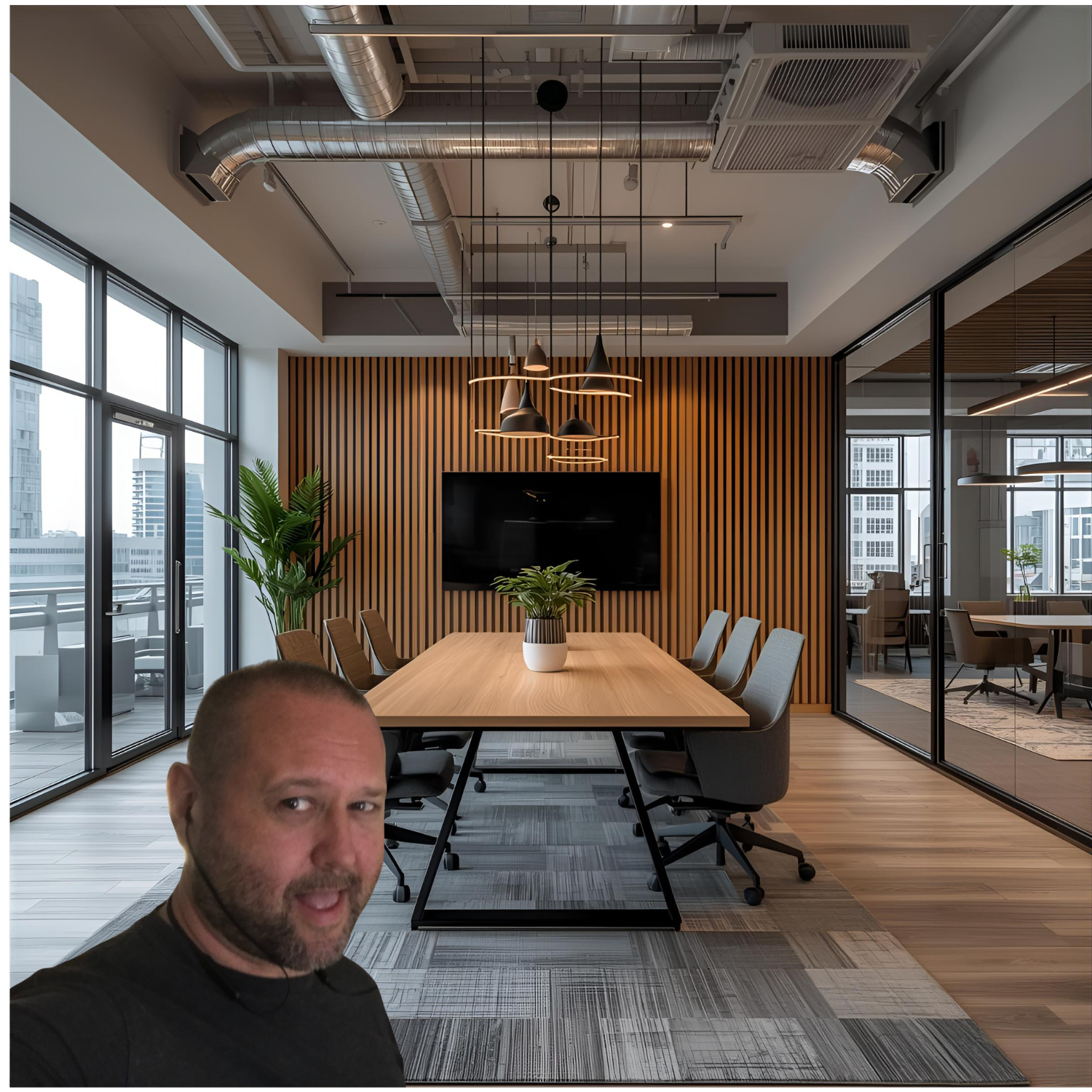About Greg Viner
I show business owners how to stay ahead of change — using AI search to get found, trusted, and chosen first.

Who I Am: I help local businesses position themselves for major digital shifts before their competitors notice what's happening. Over the past 20 years, I've spotted patterns in reviews, Google Maps, and now AI search while others were still figuring out the previous wave.
My approach:
I focus on results, not vanity metrics
I believe in solutions enough to prove them first, invoice later
I work with forward-thinking business owners who see themselves as leaders
I adapt and evolve as the digital world changes
The Yellow Pages Moment
I picked up the yellow pages one day. The directory was still wrapped in protective plastic. Brand new.
I went to put the book where I keep my yellow pages. Two more editions were sitting there. Also unwrapped. From the previous two years.
Three years had passed without me using the yellow pages. I hadn't even noticed.
This moment stuck with me because digital shifts happen exactly this way. Gradually, then suddenly. You don't notice you've changed behavior until you look back and see the pattern.
I've spent my career recognizing these patterns before they become obvious to everyone else.
The lesson: Behavioral changes happen quietly. By the time everyone notices, the opportunity is gone.
A Family of Achievers
My dad instilled something in me at a young age. Sales wasn't a backup plan if you couldn't get a "real career." Sales was a learned skill. A valuable one. Something you could master.
But the truth is, sales excellence runs deeper in my family than one generation.
My mother was an excellent salesperson and built a successful career through her skills. Her father, my grandfather, was the best salesperson I've ever known. He built a thriving manufacturing facility entirely on the strength of his relationships. Not through aggressive tactics or gimmicks. Through genuine connection and trust.
I have this within me. This ability to build relationships, understand what people need, and deliver solutions they value. Three generations of proof.
I approached sales as a serious pursuit from day one because I'd seen what mastery looked like.
When I graduated college one May, I got hired at a national newspaper selling advertising. The sales team had started a contest a month before I arrived. I was a complete newcomer, a month behind everyone else who'd been racking up sales.
I won the contest.
Fifteen years later, at a different firm in another industry I managed a sales team of nine people. My sales represented roughly 60% of total revenue for the organization. The other eight people combined brought in the remaining 40%.
I was single-handedly determining the fortunes and livelihoods of 300 employees and their families. It was quite a responsibility that I didn't take lightly.
Eventually I went out on my own and started a training organization. I taught people to become better at sales and communication. The business was successful, but I faced a challenge.
I didn't have credentials. No master's degree. No PhD. No published book.
I couldn't set myself apart from all the other consultants making promises and claims.
The Risk Removal Offer
So I came up with a solution. When I quoted a job, I'd tell them what they needed and what I'd charge. But I'd deliver the training first. If they didn't see value, if I didn't help them hit their benchmarks, I wouldn't invoice them.
In eight years of running the business, not one company refused to pay my full invoice.
I believed in my solutions. Confidence removed buyer risk better than any credential could.
What this taught me: When you know your solutions work, you're willing to prove them before asking for payment.
The Identity Crisis
After I'd finish with a client, I couldn't count on them for future business. I'd fixed their problems and provided training. They were done.
I'd deliver workshops and seminars to everyone from executives to frontline workers. At first, nobody was enthusiastic. They'd seen plenty of boring training before.
But I got results.
People would come up to me afterwards. They'd tell me how much they enjoyed the training. How things felt like I'd worked with them for years. How I'd described their exact daily problems and offered solutions.
I realized I needed a way to transfer this energy and sentiment to my marketing.
I'd lift up my phone and try to record testimonials. I'd ask people to repeat what they'd said so enthusiastically.
Things went nowhere. People would stammer and stutter. They couldn't recreate the authentic moment.
How I Discovered Review Marketing
This led me to review marketing about 20 years ago.
I learned about reviews as a way to capture authentic client sentiment. Then I realized I had an identity crisis. I saw myself as a sales trainer and communicator. But I'd discovered a better business model: helping companies with their digital marketing and online reputation.
This was my start into digital marketing.
Back then, I met massive resistance. Business owners would tell me they didn't need a review program because nobody looked at reviews when making buying decisions.
I knew they were wrong. I'd spotted the pattern early.
No sane businessperson would say this today. Research now shows 88% of consumers would use a business responding to all reviews, compared to 47% who'd trust one staying silent.
Pattern recognition: When everyone dismisses a trend, early adopters who see the pattern gain disproportionate advantage.
Spotting the Google Three-Pack Shift
Then I learned how Google Maps worked.
Many of my clients were enjoying what I call unearned business. They were in the top seven of Google Maps results. Google displayed seven listings for pretty much every business sector at the time.
Google announced with a year's notice they were changing from a seven-pack to a three-pack.
Most businesses hadn't even set up their Google Business Profile. Google had assigned them listings by scraping the internet. These people were receiving phone calls and business because they happened to be in the seven-pack.
I approached my clients ranked four through seven and below. I told them things were changing to a three-pack soon. We needed to take action to get them into those top three spots.
Not one client moved forward.
They were happy with their current results. They weren't future-oriented.
When Google made the change, phones went dead for anyone outside the three-pack. Within two weeks, I was receiving frantic calls from clients who were suddenly interested in how to get into the three-pack.
They'd completely ignored the warning I'd given them in advance.
Hard truth: Businesses don't act on warnings about digital shifts until the pain of inaction becomes immediate.
Why I'm Focused on AI Search Now
Eventually getting everyone into the three-pack became impossible. There's only room for three businesses per category and keyword.
SEO companies were charging outrageous amounts of money for a failing strategy. They were trying to get clients into spots where only three could exist. But everyone was competing.
Businesses were spending money for no result.
This led me into paid traffic alongside organic strategies. But I've always been skeptical of vanity metrics. Clicks, heat maps, impressions, social media post activity. The stuff making business owners feel like they're doing something.
I've always focused on results. Filling appointment books with paying clients and patients.
The AI Search Discovery
A little over a year ago, I noticed AI search was starting to change how people found businesses.
I work with a lot of chiropractors. One of their constant frustrations is only about 15% of the population seeks out chiropractic care. They always wonder how to reach the other 85% who don't understand chiropractic might help them.
AI search changes this dynamic completely.
With Google Maps, people already know they want a chiropractor. Google directs them to the most relevant option.
People who don't know what they don't know are asking about their pain and injuries. How to help themselves without surgery or medication. AI is recommending treatments these users often don't even know exist.
Shockwave therapy. Laser therapy. Treatments opening the marketplace to people who never realized they needed a chiropractor.
I was in my city searching Google about concussions and treatment options. I wasn't even realizing I was using Gemini. I was entering a search into Google.
AI recommended a clinic local to me.
I realized this was a huge shift. The same yellow pages moment happening again.
The shift: AI search reaches people who aren't actively looking for your service yet, expanding your addressable market.
What Drives Me Today
The same curiosity drives everything I do.
I've spent the past two decades helping local businesses adapt to change instead of reacting to it.
What started as sales training has evolved into helping people build real visibility and authority in the age of AI search.
Who I Work With
Many of my clients are complacent. They're happy enough with what they're doing. But they're also struggling to grow.
If you don't grow, you shrink. There's entropy. Businesses lose patients even if they're excellent at what they do. People move away. People pass away. Things change.
Unless you're growing, your practice is either going up or going down. There's no staying in the same position.
I find this to be a useful filter. I prefer to work with people who have executive-level thinking. People who understand trends. Who see themselves as leaders and want their communities to see them as leaders too.
How I Practice What I Preach
I post about these ideas regularly and often. I'm constantly learning what's happening. Constantly researching what works and what doesn't.
I invest an abundant amount of my time trying to better understand what helps my clients achieve authority and recognition.
I've spotted the yellow pages shift. I saw reviews become essential when everyone dismissed them. I warned clients about the Google three-pack change a year before things happened.
I'm seeing the same pattern now with AI search.
The Pattern Repeats
Here's what I know from watching this pattern repeat itself over 20 years: early adopters win. Laggards wish they'd paid attention and invested time and resources earlier.
The yellow pages moment is happening again. You won't realize you've changed your behavior until you look back and see the pattern.
The difference is whether you're positioned to benefit from the change or scrambling to catch up after everyone else has already claimed the territory.
If you're here, chances are you're someone who sees what's coming next and wants to lead things, not chase them.
You're in the right place.
Common Questions About My Background and Approach
What made you shift from sales training to digital marketing?
I discovered reviews as a way to capture authentic client testimonials. This led me to realize digital marketing and online reputation management was a better business model than one-time training engagements. The identity crisis turned into an opportunity.
How do you spot these digital shifts before others?
I pay attention to my own behavior changes. The yellow pages moment taught me shifts happen gradually, then suddenly. I watch for these patterns in how people search for and find businesses. When I notice my own habits changing, I know others are too.
Why do you focus on chiropractors?
Chiropractors face a unique challenge: only about 15% of the population actively seeks chiropractic care. AI search solves this by recommending chiropractic treatments to people asking about pain management who don't even know chiropractic is an option. This opens up the other 85% of the market.
Moving forward, I'm open to working with other local businesses as well. There's nothing specific about the chiropractic industry when it comes to AI search. The same principles getting chiropractors found will help any local business get found online. These strategies apply across industries. Whether you're a dentist, lawyer, accountant, or any service-based local business, the approach works.
What does your risk removal offer teach about business?
When you're confident in your solutions, you're willing to prove them before asking for payment. In eight years, not one client refused to pay my full invoice. Confidence removes buyer risk better than credentials or promises.
Why didn't clients act on your Google three-pack warning?
Businesses don't act on warnings about digital shifts until the pain of inaction becomes immediate. They were happy with their current results and weren't future-oriented. Within two weeks of Google's change, phones went dead and I got frantic calls.
What's the biggest mistake businesses make with digital marketing?
Focusing on vanity metrics instead of results. Clicks, heat maps, impressions, and social media activity make business owners feel like they're doing something. I focus on filling appointment books with paying clients and patients.
Key Insights From My Journey
Digital shifts happen gradually, then suddenly. By the time everyone notices, the opportunity for early advantage
is gone.
Confidence in solutions beats credentials. When you believe in what you offer, you're willing to prove results before asking for payment.
Pattern recognition is a skill. Spotting trends early comes from paying attention to your own behavior changes and extrapolating to broader markets.
Businesses react to pain, not warnings. Most won't take action on digital shifts until inaction hurts immediately.
AI search expands addressable markets. Unlike traditional search where people know what they want,
AI recommends solutions to people who don't yet know your services exist.
Growth isn't optional. If you're not growing, you're shrinking because of natural entropy in business.
Below, you'll find some of my recent posts where I share lessons, predictions, and frameworks for navigating this shift.

Facebook Stopped Being a Social Network
TL;DR: Facebook now prioritizes search-relevant content over social connections. Up to 50% of feed... ...more
Personal Insights
November 19, 2025•0 min read

The Algorithm Now Rewards What You Actually Care About
Why ChatGPT Can't Win the AI Search Race for YouTL;DR: AI search engines like ChatGPT, Claude, and... ...more
AI Visibility & Search
November 15, 2025•0 min read

Three People Run Aldi's Entire Social Strategy
TL;DR: I came across research showing how Aldi transformed social media results with a three-person... ...more
AI Visibility & Search
November 12, 2025•0 min read

AI Search Just Restarted The Google Maps Race
TL;DR: AI search has changed local business visibility the way Google Maps did a decade ago. AI... ...more
AI Visibility & Search
November 12, 2025•0 min read

Gen Z Stopped Using Google For Local Search
TL;DR: Gen Z consumers (aged 18-24) now use Instagram (67%) and TikTok (62%) more than Google... ...more
Local Business Growth
November 12, 2025•0 min read

Stop Chasing Trends and Follow This Data Instead
Quick Read: Social media growth in 2025 comes down to four proven strategies: prioritizing video... ...more
AI Visibility & Search
November 12, 2025•0 min read
About Greg Viner
I help local business owners use AI, automation, and smart marketing systems to get found, trusted, and booked.
I write about visibility, growth, and the tools that make business simpler.
Let’s Connect
Have a question or collaboration idea?
→ Get in Touch
[email protected]
